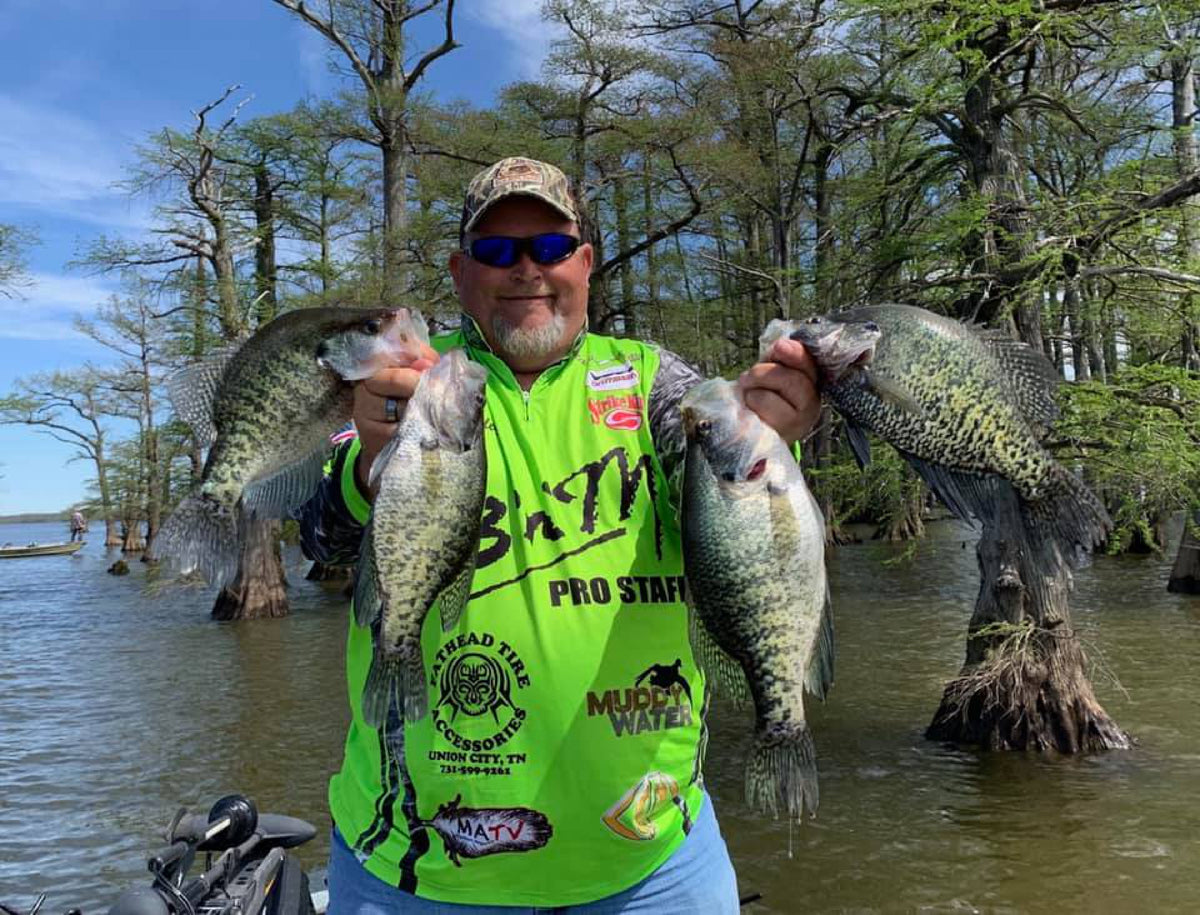
Tim Blackley: Find the Bait, Find Fall Crappie
Tim Blackley: Find the Bait, Find Fall Crappie
By Phillip Gentry
When the end of October rolls around, there are two things on Tim Blackley’s mind – baitfish and ducks. On the days he is not getting his duck impoundments and hunting blinds ready for the winter migration of ducks into the Reelfoot Lake area, he’s out on one of the major crappie producers near his home in Union City, Tennessee looking for baitfish.
“This time of year, crappie get on a real predictable and dependable pattern,” said Blackley. “Fish are moving out of deep water into the shallows. It’s very similar to the spring spawning run, except they are not moving in to spawn, they’re following baitfish in to feed.”
Blackley stated that on some lakes, crappie anglers can expect crappie to be scattered up and down a tributary arm. On other lakes, the fish will be moving but in more of a leap frog fashion and staging on brushpiles, stake beds, and natural wood cover along the route.

The use of advanced electronics will help anglers locate baitfish and crappie and even assist in picking out the ones you want to catch.
He gave two examples of this on either end of the spectrum. At Kentucky Lake, the fish are glued to stake beds and brush piles. He has been making the trip up to Kentucky to get some experience with the “forward scan” of his Garmin Live Scope sonar unit.
“Right now, it’s single poling on Kentucky, using a Sam’s Super Sensitive rod and a 1/8 oz Strike King jig head in pink with a tube jig on it,” he said. “I am literally picking the bigger fish on the screen and moving the bait out in front of the boat to that fish and catching him while I watch it all unfold on the screen.”
While Blackley has a pretty extensive list of brushpiles and stake beds that are located on Kentucky Lake, he said first time anglers to the reservoir can also locate fish with a decent set of electronics.
Blackley is a fan of single poling on Kentucky lake when fish are tight to cover but will slow troll in other lakes.
“Find the bait, find the fish,” he said. “Then start looking for structure where crappie will be holding and waiting on those baitfish to swim by.”
Blackley said the same principle, but different tactic, will also work on a known big fish lake like Grenada Lake in Mississippi or Reelfoot Lake in Tennessee. The big difference is that crappie are scattered on Grenada and the trick is, once again, find the bait, find the fish.
“The water levels are dropping on Grenada. The lake operates on a rule curve because it’s a flood control lake and they’re letting the water down for the winter,” he said. “Most everyone will be slow vertical trolling right now to both find and catch crappie.”
The typical Grenada setup is three poles per angler, with his preference being 16-foot B’n’M BGJP’s to tight line double hook minnow rigs or double jigs or a combination of the two.
“We fished a tournament at Grenada a couple weeks ago and most of the better fish were scattered, which is why the best method is to slow troll for them, but the presence of baitfish in the area is certainly key to catching those fish,” said Blackley.

The new Sam Heaton Super Sensitive jig pole is a great asset when going head-to-head with fall crappie.
Unlike Grenada, Blackley said the conditions on his home lake, Reelfoot, is the typical fall pattern except the water is up from all the recent rains. He suggested Reelfoot anglers concentrate their efforts on the main lake basin and slow troll over the tops of the stumps out in the lake. Some days the crappie will be tight to the structure and others they will be suspended up in the water column over the top of it.
Blackley said he expects the fall pattern to hold up on his area lakes as well as most crappie lakes across the country until the water temperatures drop below 50 degrees. On lakes that don’t freeze up, 45 is the start of the winter pattern. At this stage, look for crappie to head back out to deeper water and bunch up tightly over structure.
“At that point, they don’t feed a whole lot,” he said. “When you find them, you can usually catch a bunch of them but they are bad to feed for only an hour or so and then cut off. There are ways to catch them, but it’s not like the fall pattern”
That’s an article for another day.
Check out all the latest tips and techniques for crappie fishing year round by visiting the B’n’M website at bnmpoles.com
Also in Weekly Tips and Techniques

Winter Crappie Fishing Strategies with Lance Hughey
B’n’M pro-staffer Lance Hughey said it never gets too cold to catch crappie.

North Texas Fall Crappie Fishing with Brian Carter
Texas crappie pro-staffer Brian Carter loves to pitch jigs at standing timber during the fall of the year.

Summer Crappie Fishing with Billy Blakley
B’n’M pro-staffer Billy Blakley claims the copious amount of rainfall so far this year has created some great summer crappie fishing on Reelfoot Lake.

